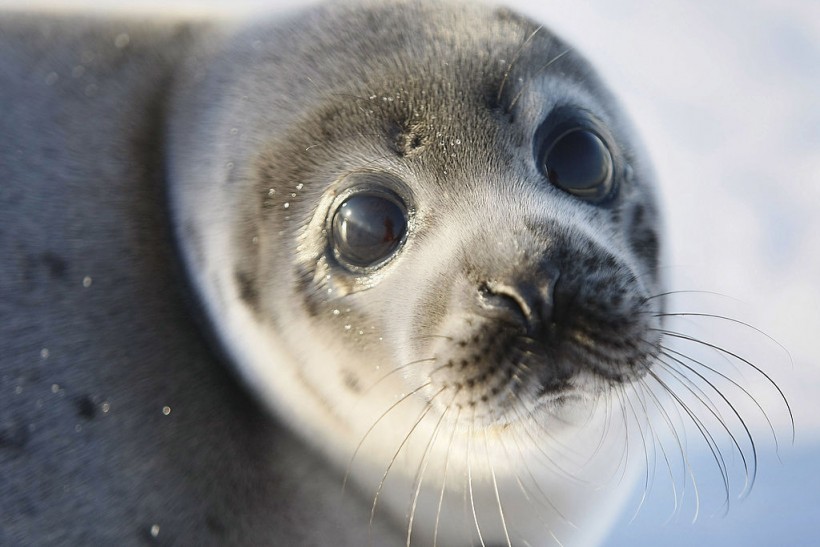California's coast is home to a diverse array of marine life, including harbor seals, which are often seen resting on the beaches or swimming in the water.
These seals are also an important part of the ecosystem, providing food for other animals such as sharks, orcas, and sea lions.
However, in recent years, a new threat has emerged for the seal pups: coastal coyotes.
The Mystery of the Headless Seals
 (Photo : Joe Raedle/Getty Images)
(Photo : Joe Raedle/Getty Images)

Since 2015, ecologists have been puzzled by the discovery of decapitated seal carcasses, mainly at MacKerricher State Park, near Fort Bragg in Mendocino County.
The killings were not frequent, but they were gruesome and unusual. The seals' heads were cleanly severed from their bodies, leaving behind a bloody stump.
Ecologists wondered who or what was behind this macabre phenomenon. Was it a human, a dog, an eagle, or something else?
The mystery was finally solved last year, when a wildlife camera captured a coyote dragging a freshly killed seal into the frame, and proceeding to take its head off.
The video confirmed the suspicions of some researchers, who had a hunch that the coastal coyotes were the culprits.
The coyotes, which are native to North America, have adapted to living near the ocean, scavenging on dead marine animals and occasionally hunting live ones.
The Rise of the Coastal Coyotes
The coastal coyotes are not a new species, but a subset of the common coyote that has learned to exploit the marine resources along the shore.
They are part of a larger phenomenon of coyote expansion, which has seen the animals spread across the continent, occupying urban and rural areas alike.
Coyotes are highly adaptable and opportunistic, able to survive on a variety of foods and habitats. Their coastal cousins have been observed in California since the 1980s, but their presence has increased in recent years, as they have become more confident and skilled in hunting seals.
They have also been spotted at Point Reyes National Seashore in Marin County, where another wildlife camera recorded them preying on seal pups.
These animals usually target the young and weak seals, which are easier to catch and kill. They prefer to eat the heads, which contain the brains and eyes, and leave the rest of the carcass behind.
Coastal coyotes pose a challenge for ecologists who are trying to understand and document this new predator-prey relationship.
They are also concerned about the impact of the coyotes on the seal population, which is already threatened by other factors, such as climate change, pollution, and human disturbance.
The ecologists hoped to publish their research on the coastal coyotes in a future paper, shedding light on how the species has become not just a beach scavenger, but also a beach predator.
Also Read: Antarctica: Potential Arrival Of Avian Influenza Could Also Kill Elephant Seals
The Implications of the Coastal Coyotes
The emergence of the coastal coyotes as seal predators has implications for both the marine and terrestrial ecosystems.
On one hand, the coyotes may help regulate the seal population, which has rebounded from historical lows due to conservation efforts.
On the other hand, the coyotes may disrupt the natural balance of the food web, affecting the availability of prey for other predators such as sharks and sea lions.
Coastal coyotes also have implications for human-wildlife interactions. They may pose a risk to domestic animals and livestock that live near the shore, as well as to human safety and health.
They may carry diseases such as rabies, distemper, and parasites, which can be transmitted to other animals or humans, and may also become habituated to human presence and activity, losing their fear and becoming more aggressive.
These coyotes are a fascinating example of how animals can adapt to changing environments and exploit new opportunities. They are also a reminder of how humans can influence the dynamics of nature, both directly and indirectly.
Coastal coyotes are here to stay, and they will continue to shape and be shaped by the coast they call home.
Related article: Over 300 Seals, Sea Lions Found Dead In Siberia; Experts Eye Toxins, Poisons, Viral Infections As Possible Causes
© 2024 NatureWorldNews.com All rights reserved. Do not reproduce without permission.


![Climate Change is Reducing Dust Levels Worldwide as Arctic Temperature Warms [Study]](https://1471793142.rsc.cdn77.org/data/thumbs/full/70320/280/157/50/40/climate-change-is-reducing-dust-levels-worldwide-as-arctic-temperature-warms-study.jpg)


